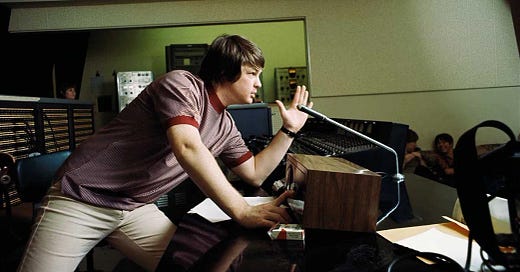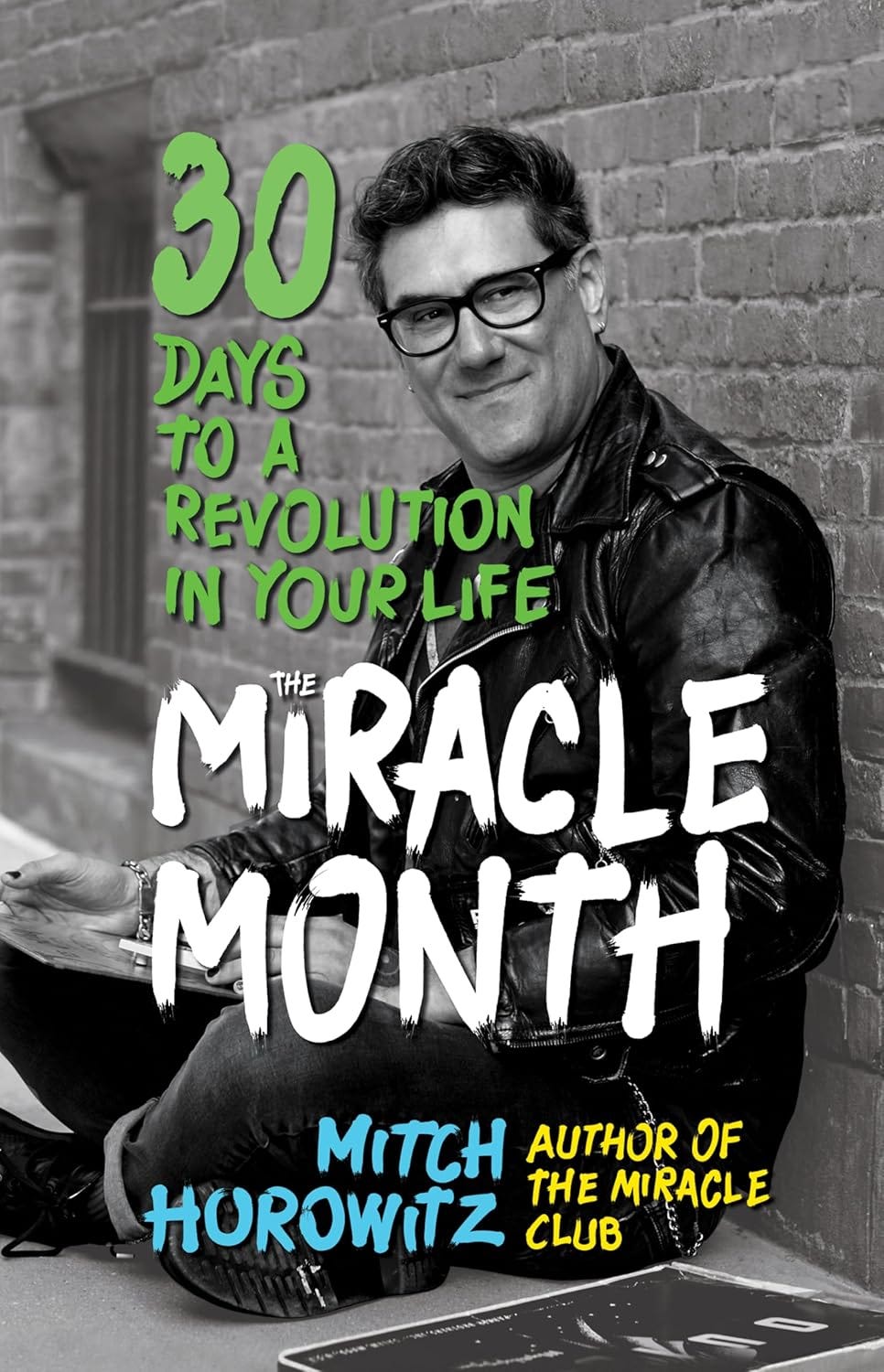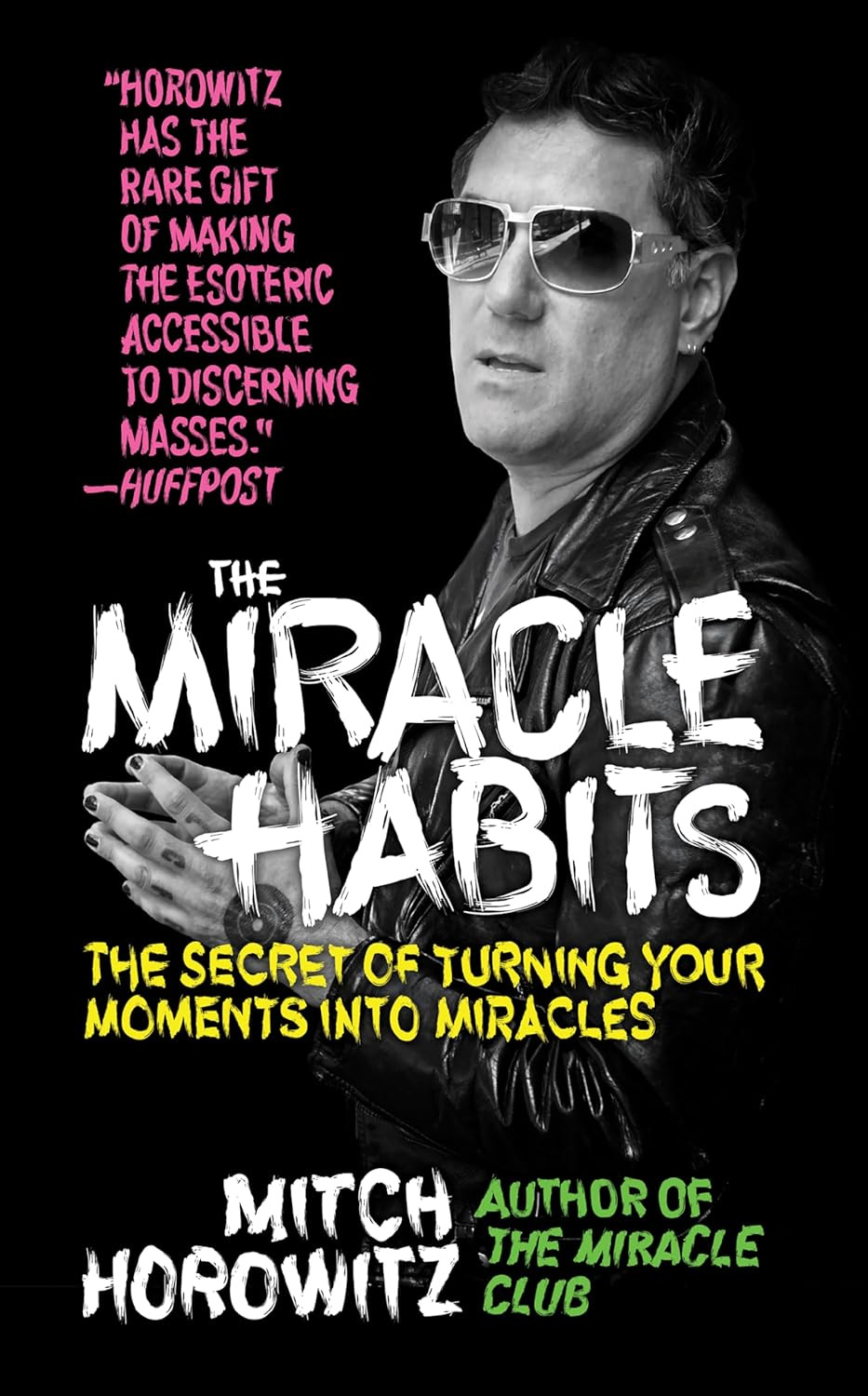News of Brian Wilson’s (1942-2025) death is an Elvis-level loss for some of us. This chapter, “Present Right,” appears in my 2021 book The Miracle Month. x -M-
* * *
I am a huge fan of Brian Wilson, the songwriter, arranger, and producer who cofounded The Beach Boys.
Wilson expanded our conception of what pop music could be. Although The Beach Boys are famous for infectious, feel-good hits about surfing and hot rods, Wilson’s orchestrations and production values combined classical motifs with pop riffs and produced some of the most uncategorizable music of our time, including the 1966 experimental masterpiece Pet Sounds.
The album represented a breakthrough expansion of the pop sound and production. Wilson also brought a new degree of lyrical introspection to the genre with songs like “I Just Wasn’t Made for These Times” and “That’s Not Me.” Pet Sounds served as a precursor to Sgt. Pepper’s Lonely Hearts Club Band and much else. I consider Brian Wilson the Orson Welles of rock.
The songwriter’s work ethic was as legendary as his output was original. “Brian was between a hipster and one of your famous British generals that was tough,” recalled bandmate Bruce Johnston in a documentary about the making of Pet Sounds. “He was tough. He demanded everything from everybody.”
Yet when Wilson and bandmate Mike Love presented the finished recording to Capitol Records the music giant’s executives were unenthusiastic. They wanted the earlier songs about summer nights and fun. Although The Beatles had already proven that an expanded pop sound could sell, the label wanted The Beach Boys to remain in their lane churning out feel-good hits.
Capitol agreed to release the record but did so unenthusiastically. The label arranged a maudlin, almost silly-looking cover shoot of Brian and his bandmates feeding barnyard animals at the San Diego Zoo. The syrupy cover photo belies everything that appears on the grooves within. It took twenty years for Pet Sounds to go platinum and finally receive the critical and fan recognition it deserved.
I have often wondered what would have occurred if Brian—who struggled with severe anxiety and depression—had pushed back against the record company’s lame packaging. Image says so much. With a more conceptual cover, like the Beatles’ contemporaneous Rubber Soul, fans and the music business in general might have been quicker to embrace Pet Sounds.
In his book Wouldn’t It Be Nice, a history of Pet Sounds, writer Charles L. Granata spoke with Mike Love about Paul McCartney’s response to the cover. McCartney has repeatedly singled out the album for praise, cited its influence on the Beatles, and offered that “I’ve just bought my kids each a copy of it for their education in life—I figure no one is educated musically ’til they’ve heard that album.” But here is what he told Love about the packaging:
Paul McCartney and I spoke about the album in the spring of 1968 when we were in India together. [The two were practitioners of Transcendental Meditation and were visiting the Maharishi’s ashram in Rishikesh.] In one conversation, he mentioned that we ought to take more care with our album covers. Paul was the mastermind behind the Sgt. Pepper album cover, which was detailed and brilliant. Ours . . . was a photo taken at the San Diego Zoo. That indicated how comprehensively Paul thought of everything. We didn’t think about the packaging—we were never marketed thoughtfully, like the Beatles. That was partly our own fault, for not thinking as comprehensively as they did.
Are you thinking comprehensively about how you are presenting yourself, your persona, and your ideas and work in the world?
Of course, image alone is insufficient. Every poet, actor, singer, and artist who you admire is known for one primary reason (or ought to be): quality of output. Admittedly, we live in an era of Internet stardom where sometimes appearance alone makes a celebrity. But take away the platform—remember Vine?—and the person with one million followers can vanish as suddenly as if he or she never existed.
The lesson of Day 24 is: let your work speak; let your image punctuate. Both are necessary. Both must be cultivated. The direction of one should contain the other. Think comprehensively. Present right.
One of the most potent examples I know of work and image coinciding appears in the career of The Twilight Zone creator, writer, and host Rod Serling (1924–1975). Someone once observed of Serling that he was one of the few writers who “looked like his material.” He had an urbane, mysterious quality and a beautiful, deep, sonorous voice. Serling was enigmatic on camera—the perfect guide to draw us in with the famous opener, “There is a fifth dimension beyond that which is known to man . . .” Not every one of us have screen presence or need to. But I do think that cultivating a total image—one based on quality of work and a self-determined, synchronous outer appearance—helps you get noticed. And noticed for the right things.
Let me return for a moment to The Beach Boys. Years after Pet Sounds, when the band had already left its old label, Capitol decided to release a Beach Boys Greatest Hits Vol. 3. It was exactly the kind of conventional treatment that Wilson chaffed against. And it sounded lame: how can a “greatest hit” appear in a third-tier volume?
This time lead singer Love spoke up and approached Capitol with a different idea. Call the record Endless Summer, he said. The new title evoked the ethos the band was after: dreamy, hopeful, and also elusive. It summoned the past without being tied to it.
Capitol agreed and Endless Summer, which otherwise might have been headed for the bargain bin as Greatest Hits Vol. 3, went triple-platinum and became one of the top-selling albums of 1974. It ignited a wave of new interest in the band. My big sister owned the double-album and I may not have otherwise discovered The Beach Boys.
Perhaps I’ve brushed past a deeper truth, noted not by The Beach Boys but by literary lion H.L. Mencken in 1912: “Style, after all, is inseparable from content, however the stylists may seek to make it appear not so.” When your work is of quality your style will often (if sometimes belatedly) follow. Cultivate this process. Whatever you do that is distinctive, brilliant, and capable should be married to the proper image. This is done not to curry favor but to contextualize content.
Pet Sounds was a revolutionary work hampered by poor packaging. Yet a potentially throwaway record, Endless Summer, was lifted to mass sales and notice by its evocative title. Hip-hop artists often prove masterful at the process I am describing. Study them.
However much we may overlook the fact or push it away, image and packaging matter. Bring this focus to your work from this point forward.
Let me add a personal note. Once I was shopping for a vintage leather jacket in connection with a television shoot. I opted for one that fit me too tightly to zip closed. When I got home I was unsure I had made the right choice—who wears a jacket that cannot close?
Someone told me, “The Ramones couldn’t close their jackets either. Just look at their album covers.” Suddenly I realized what attracted me to it, albeit unconsciously. The jacket looked street without being bulky, sleek without seeming stylized. It captured the punk elegiac image I wanted to bring to my discussion of the occult and also represented my roots. You can see the jacket on the hardback cover of this book and The Miracle Habits, as below. I married image and content—and did so authentically.
A final dimension of this principle is rejecting facsimiles.
Think for a moment of a cultural or historical figure whom you admire. The names that immediately come to mind for me are political leader Jawaharlal Nehru (1889–1964), artist Frida Kahlo (1907–1954), and architect Frank Lloyd Wright (1867–1959). If you consider or search each figure’s appearance and image you will quickly realize that it was entirely original. They didn’t copy; they were copied. They were the culture and not the commentary. The collarless “Nehru suit” that I mentioned in Day 1 is named for the East-meets-West couture of the Indian leader. Secondary? Not to him. Part of Nehru’s governing appeal in India was his ability to blend into his clothing aspects from each faith—Hindu, Buddhist, Muslim—and to dress in ways that spoke to both traditionalists and young people who wanted closer ties to the West. Style is not incidental.
We dwell not only in a thought world but a consumer one in which it is all too easy to attempt to purchase a self-image off the shelf. But that rarely satisfies. And it is often deleteriously expensive, creating a cycle of repeat and fruitless purchases. This is among the reasons that I advise assembling a personal uniform on Day 1. To the greatest extent possible, you must create yourself and your surroundings from what you make, adjust, hack, retrofit, reuse, design, and mix-and-match. This commitment has a greater impact on your persona than may first appear.
As noted in the introduction, I see no natural division between so-called inner and outer, higher and lower, material and spiritual, personality and essence—life is a whole. The boundaries that we draw are, I believe, artifice, which get reinforced through repetition and translation of translation of spiritual ideas that we consider template but that must, if they are to play an authentic function in our lives, be reinvestigated by every searching individual. Virtually every spiritual principle of self-development, whatever its vintage, originated in an atmosphere of specific cultural and human needs, and requires reverification.
Moreover, I venture that the feelings of confidence and self-possession you experience when you are “in your element,” whether in terms of people, surroundings, or adornment, should not be undervalued or ignored. They are clues to the wholeness of life and the manner in which everything is innately connected. Alter one element and you alter them all, however subtly.
* * *
There is a bar I love in my home borough of Queens, New York. It is a hangout for artists, promoters, actors, filmmakers, and musicians; its regulars all possess a gloriously distinctive and seemingly effortless look. Nothing is really effortless, of course. The quality that the bargoers bring to their personal appearance is originality of form, married to work and output. Tattoos, clothing, painted jackets, decals, pins, boots—all are items that the wearers labored to find, reclaim from original sources (remember my jacket?), or get designed for them, and then combine in ways that havenever quite been done before. Everyone is wholly him or herself.
I want you today to see yourself as a canvas that only you design. It may take time. There is no map. There are no specific rules other than: reject facsimiles. Do you want a .45 handgun tie clip? Get the real kind, the one you saw your uncle wearing that time, which maybe he had gotten from his local gun club. This kind of thing, while seemingly small, weens you away from packaged aesthetics, and, in time, packaged opinions and ideas. It makes you search rather than buy, strive rather than absorb, and preserve rather than consume. The bar I mentioned? The day before writing these words I saw someone there wearing a jacket with the words painted on the back: “Build Something Out of Nothing.” Take that as today’s motto.
I can think of no better way to honor Brian.
____________________
If you liked this article, please consider a paid subscription to this newsletter.









You are so right about the album cover, Mitch. Phenomenal piece.
"I see no natural division between so-called inner and outer, higher and lower, material and spiritual, personality and essence—life is a whole."
Dual yet whole, Two but one. The one is the many and are the one. My 2 cents.